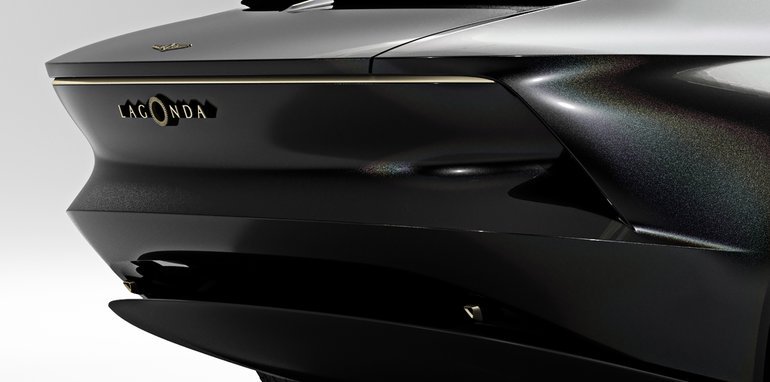Andy Palmer sits near the top of the list of industry executives journalists like to talk to. There’s a refreshing honesty to the 54-year old Brit, a willingness to slice through the sort of circumspect phrases his underlings put into press kits and speak his mind.
He managed it when working in the ultra-corporate world of Nissan, where he rose to be head of global product development. Since taking over as Aston’s CEO in 2014 his speaking has become plainer.
He has plenty to share his opinion on – Aston Martin has never been busier. This year’s Geneva show sees both the launch of the full-fang AMR Pro version of the forthcoming Valkyrie, a hypercar being co-developed with Red Bull Racing, set to combine an 820kW power output with a sub-1000kg kerb weight.
But that’s candy; the bigger news is that Aston is going to relaunch its long-dormant Lagonda brand and turn it into a luxury electric-vehicle maker. It’s a move the company hopes will come to challenge the cosy world occupied by two better-known British manufacturers of well-upholstered pluto-barges.
“Today what you have is a duopoly, Rolls-Royce and Bentley” Palmer told CarAdvice in an interview at Aston Martin’s Gaydon HQ, three weeks before Lagonda made its formal debut.
“They each to a large extent follow the way the other does their business. Personally, I don’t think the world needs another luxury three box saloon, so we need another way to address the customer. Which means picking a customer that is slightly on the periphery of that group.
“What we’ve done is look towards a younger customer, somebody who is environmentally aware but nevertheless wealthy.”
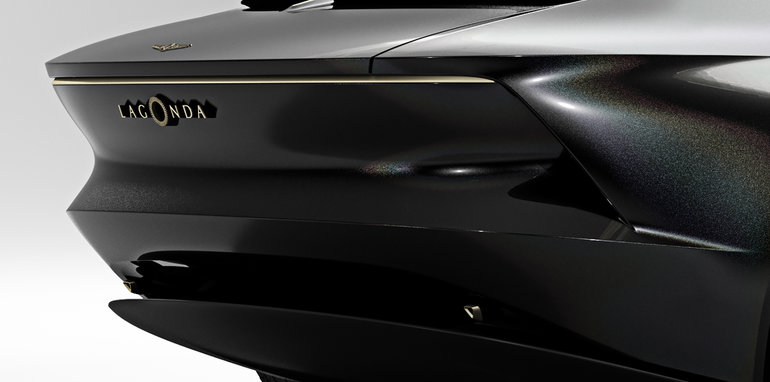
Palmer admits serious thought was given to launching Lagonda with internal combustion engines, or a mixture of conventional and electrical power.
Aston has been dropping broad hints about reviving the badge for years, most recently with the limited-run Lagonda Taraf, effectively a stretched and re-bodied Aston Martin Rapide powered by the same glorious-sounding petrol V12.
“We considered other powertrains,” he says, “but we decided it made most sense to jump straight to the logical endpoint. Lagonda equals EV, EV equals silent travel, and silence equals luxury.”
The Geneva motor show concept is more of a manifesto than a production reality, but two Lagonda models are a fully-funded part of Aston Martin’s development plan. The first, which we’re told will be as radical as the Vision Concept, will come in 2021, before being replaced by a bulkier SUV.
Palmer says the plan is for Lagonda models to be built sequentially, admitting they “don’t have the capacity to do two at the same time”.
All of them will be electric, sitting on the same Aston-developed platform set to underpin the upcoming DBX SUV, to be built in a new factory in Wales.
While the obvious comparison is with Rolls-Royce and Bentley, Palmer says the target is a group of buyers not being served by established players.
“Look at the sales of Tesla,” Palmer says. “Almost all Model S’ are now fully specced, so there’s clearly not a wealth constraint there. It’s people wanting to have what is perceived as a green car.”
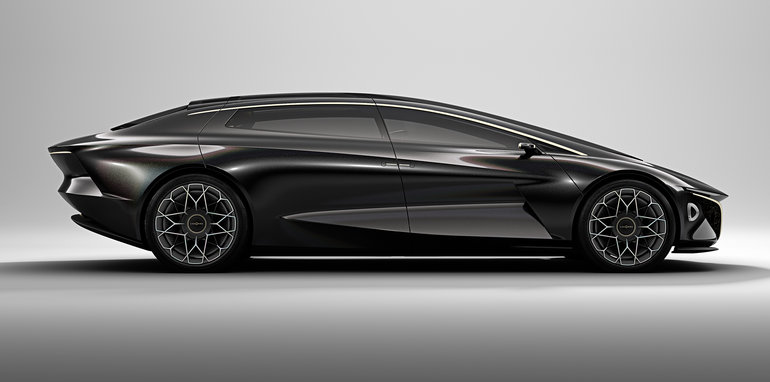
We also had the chance to speak with Marek Reichman, Aston Martin creative director and the man responsible for ensuring Lagonda cars will be perceived as significantly different. He’s also keen to make the Tesla comparison.
“Their customers have reached the ceiling,” he said down a crackly phone line, a couple of days after we spoke with his boss.
“I may be a Chinese entrepreneur or in Silicon Valley where I drive electric already. Does a Rolls-Royce Phantom fit in Silicon Valley? No, it doesn’t really.
“Does an all-electric luxury platform fit? Yes, it does – and does it fit within an entrepreneur’s mind in China? Again, yes.”
The Lagonda concept’s radical design, with a cab-forward stance to maximise cabin space, has also been chosen in deliberate contrast to Tesla, which Reichman says has stuck with a conservative direction to contrast its radical electric underpinnings.
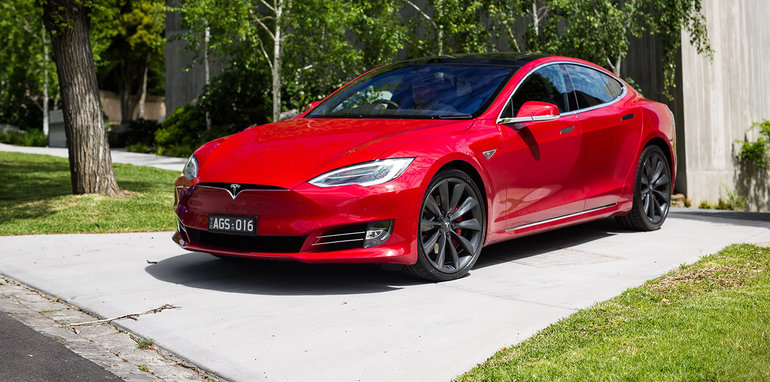
Above: The Model S and its rather conventional looks.
“Look at the Model S and you’ve got a very [Aston] Rapide-like proportion. It’s an extreme coupe with a little more internal space, but it could definitely have an internal combustion engine at the front of it,” Reichman says.
“For me it was important not to have any of the constraints of history. Why does a Phantom look the way it does? Because it’s a horse, a carriage, a trunk; how it started – it’s got a huge relevance to its past.
“But electrification doesn’t need that, there were electric cars 100 years ago but they didn’t evolve, so having an aesthetic that recognises the advantage of the tech change was vital for Lagonda…
“The benefits too, the show car is 5.3 metres long but has more space inside than a 6.3 metre stretched Phantom.”
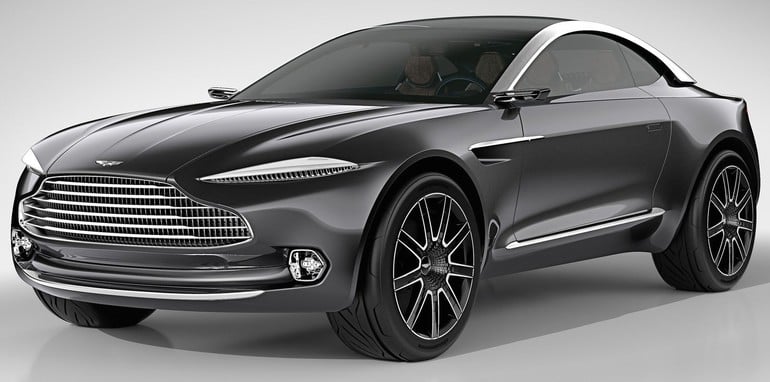
Above: The upcoming Aston Martin DBX
China’s move to electrification is going to be swift. The country is already the world’s leading consumer of electric cars, with conventionally powered luxury models set to look very old, very quickly.
Palmer says Aston’s decision to invest £600 million ($1.0 billion) into China, announced quietly in January, was aimed at buying electrical expertise, along with securing tax breaks for future Lagonda and Aston Martin electric vehicles.
“If you want to sell cars in China benefitting from [State] grant aid you have to fit batteries that are predominantly made in China,” he explains, “but the second side is that China is creating itself as a leader in EVs and has a very promising supply base.”
Volume is where it starts to get even more interesting, especially when you consider the plan to make Lagonda a fully-fledged brand instead of a quirky offshoot.
“We have a plan that’s capable of producing 14,000 cars divided by two brands,” Palmer says.
“So an average of 7000 per brand plus or minus – which kind of reflects Luca [di Montezemelo]’s mantra when he was at Ferrari, that 7000 cars is more or less the definition of luxury.”
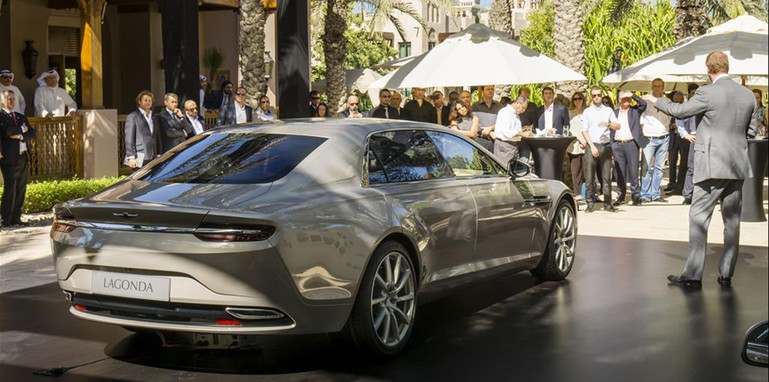
Above: The last Lagonda model to be launched, the Taraf.
Since Luca di Montezemolo left Ferrari, production has slowly been creeping up.
“Bentley have proved that you can stretch that,” Palmer continues, “from seven to twelve – so nobody really knows where the limit is.
“But you certainly don’t want to make tens of thousands of Astons or tens of thousands of Lagondas.”
Nonetheless, the long-term plan is for Lagonda to become a significant part of Aston’s total expansion. Palmer has previously said he expects a quarter of the company’s cars to be electric by 2030. Serious targets, but the industry is changing at an equally serious pace.
Palmer says Lagonda buyers will be “people who we don’t see today in the high luxury segment. They want something different.”
This definitely fits the bill.
MORE: Aston Martin news, reviews, comparisons and videosMORE: Lagonda Vision Concept revealed in Geneva
